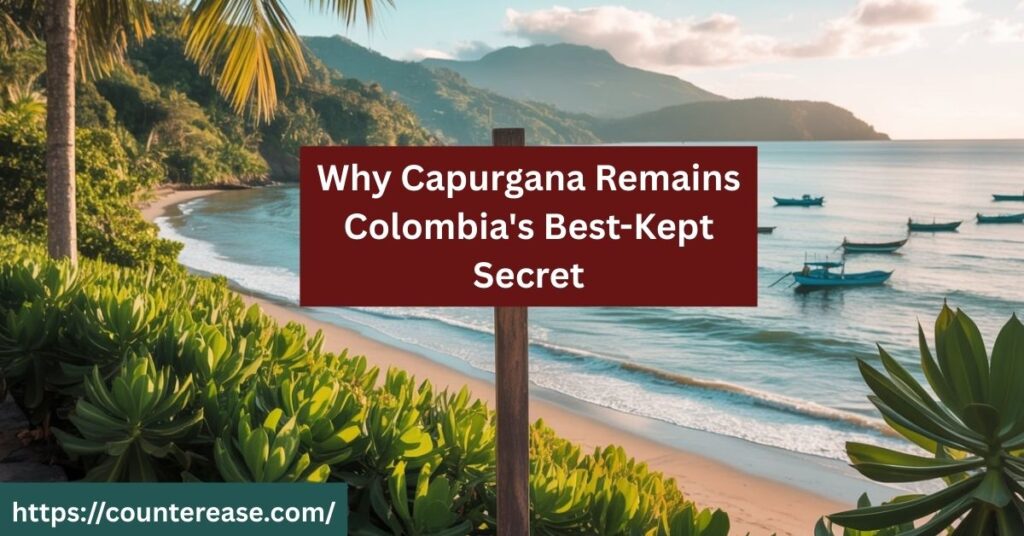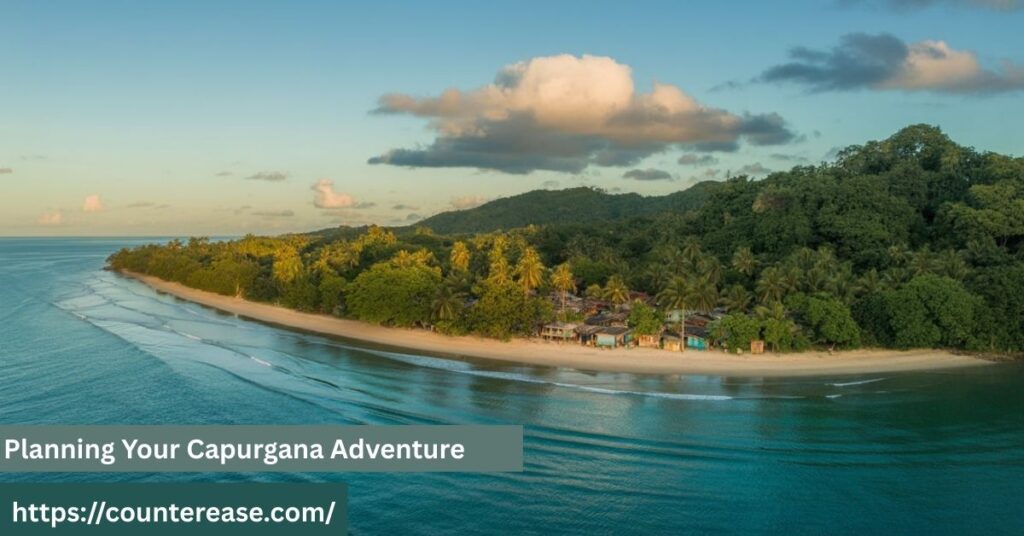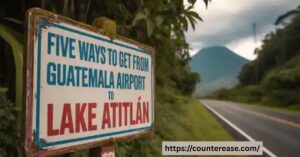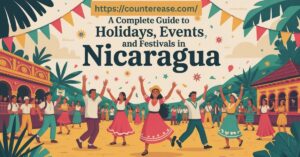Capurganá, Colombia, is a remote coastal village nestled in the Chocó region, bordering Panama’s lush Darien Gap. Known for capurgana colombia‘s untouched beaches, turquoise waters, and jungle-clad hills, capurgana colombia offers a rare glimpse into a world where nature takes center stage in capurgana colombia. With no roads leading in or out, Capurganá’s charm lies in capurgana colombia‘s seclusion, creating a peaceful escape far from urban chaos.
What makes this capurgana colombia hidden gem so irresistible is its mix of wild beauty and off-the-grid simplicity. Wooden fishing boats glide across calm bays, vibrant coral reefs teem with life, and jungle trails lead to postcard-perfect views. Here, time slows down, letting you soak in each golden sunset and ocean breeze.
Capurganá, Colombia, isn’t just another coastal spot—capurgana colombia’s a destination where authenticity thrives. From capurgana colombia’s laid-back Caribbean vibe to its warm, welcoming community, every corner feels like a secret worth keeping, yet unforgettable once found.
Your Complete Guide to Colombia’s Hidden Caribbean Paradise
Tucked away on Colombia’s northernmost coast, Capurgana stands as one of South America’s last true frontier destinations. This capurgana colombia remote village in Chocó department offers something increasingly rare in our connected world: a genuine off-the-grid experience where no cars roam the streets and cash-only transactions rule daily life.
See Also: Guatemala Airport to Antigua – Six Ways to Get There
Capurgana isn’t just another beach town. Capurgana colombia’s where Colombia meets Panama at the infamous Darien Gap, creating a unique border region that attracts everyone from backpackers seeking adventure to migrants navigating one of the world’s most challenging crossings.
Why Capurgana Remains Colombia’s Best-Kept Secret
Most travelers never reach Capurgana because capurgana colombia requires commitment. You can’t simply drive here or book a quick flight. The journey involves boat travel, potential rough seas, and accepting that modern conveniences like ATMs and reliable WiFi don’t exist.

This isolated location creates something magical. Capurgana maintains authentic Caribbean coastal culture without tourist crowds destroying its charm. The Chocó region’s Afro-Colombian communities have preserved traditions spanning generations.
Climate patterns here differ from mainland Colombia. The dry season from December to April brings perfect beach weather, while the low season delivers dramatic rainfall that transforms the landscape into lush jungle paradise.
Getting to Capurgana: Transportation Deep Dive
The Standard Route: Medellín to Capurgana
Most travelers start from Medellín, Colombia’s tourism hub. Here’s your step-by-step journey:
Step 1: Medellín to Necoclí
- Bus travel takes 8-10 hours (overnight recommended)
- Companies: Brasilia, Rápido Ochoa
- Cost: $25-35 USD
- Departure times: 6 PM – 10 PM daily
Step 2: Necoclí to Capurgana
- Speed boat ferry service (weather permitting)
- Journey time: 45 minutes to 1.5 hours
- Cost: $15-20 USD one-way
- High season (December-April): Multiple daily departures
- Low season: Limited service, cancellations common
Alternative Route: Cartagena Connection
From Cartagena, you’ll need to reach Necoclí first:
- Bus to Medellín (10 hours) then continue as above
- Direct Cartagena to Necoclí buses (12-14 hours)
- Total journey time: 15-18 hours
What Transportation Challenges Await
Rough seas frequently cancel boat services. During low season, you might wait days for departure. The speed boat ferry handles 20-30 passengers maximum, creating bottlenecks during peak travel periods.
No flights serve Capurgana directly. Small charter planes occasionally land on the beach during dry season, but these aren’t regular services tourists can book.
| Route | Time | Cost | Difficulty |
|---|---|---|---|
| Medellín-Necoclí-Capurgana | 10-12 hours | $40-55 | Moderate |
| Cartagena-Necoclí-Capurgana | 15-18 hours | $60-75 | Challenging |
| Charter flight | 2 hours | $300+ | Weather dependent |
Geographic Context: Where Exactly Is Capurgana?
Capurgana sits at Colombia’s absolute northern tip in Chocó department. The border region with Panama creates unique dynamics you won’t experience elsewhere in Colombia.
This isolated village occupies a narrow coastal strip between jungle-covered mountains and Caribbean waters. No cars can reach here because no roads connect to the outside world. Motorbikes handle local transportation, though most destinations require walking.
The Darien Gap begins just beyond Capurgana. This infamous jungle corridor between Colombia and Panama remains one of the world’s most dangerous migration routes. Understanding this context helps explain the migrant flows you might witness.
Sapzurro, Colombia’s northernmost village, lies 30 minutes away by boat or 2-hour jungle hike. From Sapzurro, you can walk to Panama in 10 minutes.
Accommodation Options: From Budget to Boutique
Budget Backpacker Favorites ($15-30/night)
Hostal La Bohemia dominates the backpacker scene. This beachfront property offers shared rooms with basic amenities and social atmosphere perfect for solo travelers.
Key features:
- Dormitory beds: $15-18/night
- Limited electricity (6 hours daily)
- Communal kitchen and bathroom
- Backpacker vibe with international crowd
- No wifi in rooms, spotty common area connection
Local hostels and guesthouses provide alternatives:
- Casa de Huéspedes Marleny: $20/night private room
- Posada Familiar Los Delfines: $25/night with breakfast
- Corner shop exchange rates available for peso conversion
Mid-Range Comfort ($40-80/night)
Hotel Katamaran leads mid-range options with beachfront location and better amenities:
- Private rooms with ocean views: $60-75/night
- Phone signal available (intermittent)
- Restaurant on-site
- Power outages still affect service
- Hot water (when electricity works)
Cabañas Los Almendros offers jungle setting experience:
- Rustic cabins: $45-65/night
- Eco-friendly design
- Remote location requires walking
- Off-the-beaten-track atmosphere
- Natural ventilation (no AC)
Splurge Experiences ($100+/night)
Limited luxury options exist due to infrastructure constraints. Eco-lodges in surrounding areas occasionally operate during high season:
- Playa de Oro Lodge (seasonal): $120-150/night
- All-inclusive packages with meals and activities
- Solar power systems
- Advanced booking essential
Activities and Adventures in Capurgana
Beach Exploration
La Miel serves as the main beach where boats arrive. This protected bay offers calm swimming conditions and basic facilities. Crystal clear waters make snorkeling worthwhile, though coral diversity remains limited.
Playa Soledad requires 45-minute hike through jungle terrain. This secluded beach rewards effort with pristine sand and excellent swimming conditions. Bring water and snacks – no facilities exist.
Bahia El Aguacate stands out as the premier destination for water activities. This protected lagoon features:
- Exceptional snorkeling with tropical fish
- Crystal clear waters perfect for underwater photography
- Mangrove kayaking opportunities
- Day trip boat excursions ($25-30 per person)
Cross-Border Panama Adventures
Puerto Obaldia in Panama lies 45 minutes by boat from Capurgana. This border crossing requires careful planning:
Documentation needed:
- Valid passport with 6+ months validity
- No passport stamp required for day visits
- Return boat ticket as proof of onward travel
What to expect in Puerto Obaldia:
- Small Panamanian village atmosphere
- Different currency (US dollars preferred)
- Limited tourist facilities
- Cultural differences from Colombian side
The hike to Sapzurro takes 2 hours through jungle trails. From Sapzurro, walk 10 minutes to reach Panama unofficially. This remote border sees minimal official presence.
Jungle Hiking Adventures
Trail options vary from easy walks to challenging full-day adventures:
Easy trails (1-2 hours):
- La Miel to town center
- Beachfront walks
- Local waterfall access (seasonal)
Moderate hikes (3-4 hours):
- Capurgana to Sapzurro overland
- Interior jungle exploration
- Bird watching circuits
Challenging adventures (full day):
- Multi-village hiking connections
- Remote waterfall expeditions
- Indigenous community visits (guide required)
Essential hiking gear:
- Waterproof boots
- Insect repellent
- Rain protection
- Plenty of water
- Basic first aid supplies
Food Scene and Local Flavors
Capurgana’s culinary scene reflects its isolated nature. Fresh seafood dominates menus, with lobster, red snapper, and shrimp caught daily by local fishermen.
See Also: A Guide to Eating and Street Food Cuisine in Nicaragua
Must-try dishes:
- Coconut rice with fresh fish ($8-12)
- Fried plantains with beans ($4-6)
- Lobster preparations (market price, usually $15-20)
- Tropical fruit varieties unavailable elsewhere
Budget eating options:
- Local comedores: $3-5 complete meals
- Street food vendors (limited selection)
- Corner shop snacks and basics
- Fresh fruit from traveling vendors
Restaurant recommendations:
- Restaurant Katamaran: Best seafood, $10-15 per dish
- Comedor Familiar: Local atmosphere, $5-8 meals
- Beachfront informal stalls: Grilled fish, $6-10
Supply limitations affect menu variety. Everything arrives by boat, making imported goods expensive. Fresh produce depends on weather conditions and boat travel schedules.
Money Matters and Practical Economics
Capurgana operates on a cash-only economy with no ATM services available. This creates unique financial challenges for visitors.
Currency Exchange Reality
Exchange dollars for pesos at corner shop businesses or accommodations. Rates fluctuate but typically fall 5-10% below official exchange rates.
Accepted currencies:
- Colombian pesos (preferred)
- US dollars (widely accepted)
- Euros (limited acceptance, poor rates)
- Credit cards (virtually useless)
Daily Budget Planning
| Budget Level | Daily Cost | Includes |
|---|---|---|
| Backpacker | $25-35 | Dorm bed, basic meals, local transport |
| Mid-range | $50-75 | Private room, restaurant meals, boat trips |
| Comfortable | $100+ | Better accommodation, all activities |
Price examples:
- Hostel bed: $15-18/night
- Private room: $40-75/night
- Meals: $3-15 per person
- Boat trips: $20-40 per person
- Local motorbike rides: $2-5
Money-Saving Strategies
Bring sufficient cash from mainland Colombia. Exchange rates improve in larger cities like Medellín or Cartagena.
Calculate total trip costs before departure, adding 20% buffer for unexpected expenses or weather delays.
Infrastructure Realities: Power, Communication, and Connectivity
Electricity Challenges
Limited electricity affects daily life significantly. Power outages occur regularly, with many accommodations receiving only 6-8 hours of power daily.
Electricity schedule (typical):
- Morning: 6 AM – 10 AM
- Evening: 6 PM – 10 PM
- Afternoon power rare except high season
Practical implications:
- Phone charging requires planning
- No wifi during power outages
- Hot water availability limited
- Fan/AC access restricted
Communication Options
Phone signal exists but remains unreliable. Colombian carriers (Claro, Movistar) provide best coverage, though data speeds stay slow.
WiFi availability:
- Most accommodations offer basic wifi
- Speeds adequate for messaging only
- Video calls rarely function
- No wifi guarantees during outages
Internet alternatives:
- Satellite internet (expensive, limited)
- Phone signal data (slow, costly)
- Complete digital detox (recommended approach)
Medical and Emergency Services
Basic medical facilities exist for minor issues. Serious emergencies require boat travel to Necoclí or helicopter evacuation (extremely expensive).
Available medical care:
- Rural health post (basic treatments)
- Pharmacy with limited medications
- Traditional medicine practitioners
- First aid trained accommodation staff
Health preparations:
- Comprehensive travel insurance essential
- Prescription medications for full trip
- Basic first aid supplies
- Vaccination records current
Cultural Immersion and Community Life
Capurgana showcases authentic Afro-Colombian culture preserved through geographic isolation. Chocó region traditions remain strong due to limited outside influence.

Local Community Dynamics
The remote location creates tight-knit community bonds. Residents often have family connections spanning multiple generations. No cars and limited tourist infrastructure maintain traditional lifestyle patterns.
Economic activities:
- Fishing (primary livelihood)
- Tourism services (growing sector)
- Small-scale agriculture
- Migrant assistance services
- Transportation boat operations
Cultural Traditions
Music plays central role in community life. Currulao, champeta, and traditional drums fill evening air. Local festivals occur throughout year, though high season features most celebrations.
Language considerations:
- Spanish essential for meaningful interaction
- Local dialect includes unique expressions
- English speakers extremely rare
- French/Portuguese occasionally useful with migrants
Respectful Tourism Practices
Capurgana’s growing popularity among backpackers creates both opportunities and challenges for local communities.
Positive tourism behaviors:
- Support local businesses over outside operators
- Learn basic Spanish phrases
- Respect cultural differences
- Exchange money with established businesses
- Tip service providers appropriately
Problematic tourist behaviors:
- Excessive bargaining with struggling vendors
- Public intoxication or disrespectful behavior
- Ignoring cash-only policies and expecting credit cards
- Treating limited electricity as accommodation fault
- Photographing people without permission
Seasonal Planning and Weather Patterns
High Season Excellence (December to April)
Dry season brings Capurgana to life. December to April offers ideal conditions for all activities:
Weather characteristics:
- Minimal rainfall
- Consistent boat services
- Crystal clear waters for snorkeling
- Comfortable hiking conditions
- Phone signal more reliable
Tourism dynamics:
- Colombian holidaymakers dominate December-January
- International backpacker peak February-March
- Accommodation prices increase 50-100%
- Advance booking essential
- Boat travel most reliable
Low Season Realities (May to November)
Low season transforms Capurgana completely. Heavy rainfall creates different challenges and opportunities:
Rainy season impacts:
- Boat cancellations frequent
- Hiking becomes muddy and difficult
- Power outages increase
- Accommodation prices drop significantly
- Fewer tourists create authentic experience
Seasonal advantages:
- Dramatic waterfalls reach full flow
- Lush jungle trails showcase biodiversity
- Authentic community interaction
- Photography opportunities with dramatic skies
- Lower costs across all services
Day Trip Extensions and Multi-Day Adventures
Sapzurro Village Exploration
Sapzurro represents Colombia’s northernmost settlement. This tiny border village offers:
Getting there:
- Boat service: 30 minutes, $10-15 per person
- Hiking route: 2 hours through jungle
- Motorbike transport: 45 minutes (dry season only)
Village highlights:
- Panama beach walking distance
- Local seafood restaurants
- Traditional architecture
- Border crossing experiences
- Stunning coastal views
Accommodation options:
- Basic guesthouses: $20-30/night
- Camping possible with permission
- Day trip recommended for most visitors
Multi-Day Jungle Adventures
Remote jungle lodges offer immersive experiences for adventurous travelers:
3-day jungle packages:
- Professional guide included
- All meals and accommodation
- Hiking multiple trail systems
- Bird watching and wildlife spotting
- Traditional medicine plant education
- Cost: $200-300 per person
5-day exploration circuits:
- Multiple village visits
- Indigenous community interactions
- Remote waterfall destinations
- Survival skills workshops
- Cultural exchange programs
- Cost: $400-600 per person
Essential Packing for Remote Coastal Living
Capurgana’s isolated nature requires strategic packing. No ATM, limited electricity, and restricted supply access demand preparation.
See Also: Spain | 15 Best and Unique Things to do in Salamanca, Spain
Critical Items Unavailable Locally
Electronics and power:
- Portable power bank (large capacity)
- Solar charger for extended stays
- Universal adapter
- Waterproof phone case
- Backup charging cables
Personal care:
- Prescription medications (full supply)
- Specific toiletries and cosmetics
- Sunscreen (high SPF, reef-safe)
- Insect repellent (DEET-based)
- First aid supplies
Clothing and gear:
- Quick-dry clothing
- Rain gear (essential)
- Waterproof hiking boots
- Mosquito net
- Dry bags for valuables
Items Available but Expensive
Basic supplies exist in corner shop businesses but cost 2-3 times mainland prices:
- Snacks and processed foods
- Basic toiletries
- Simple clothing items
- Phone credit top-ups
- Batteries
Safety Considerations for Border Region Travel
Capurgana’s location near the Darien Gap creates unique security considerations. While generally safe for tourists, awareness remains important.
Regional Security Context
The Darien region sees significant migrant flows from various countries attempting dangerous jungle crossings. This creates:
- Increased military and police presence
- Occasional checkpoints and document verification
- Remote areas with limited emergency response
- Potential for encountering distressed migrants
Practical Safety Measures
Document security:
- Carry passport copies, secure originals
- Register with accommodation upon arrival
- Inform someone of travel plans
- Keep emergency contact information accessible
Health and emergency preparedness:
- Comprehensive travel insurance mandatory
- Phone signal often unreliable for emergencies
- Nearest hospital requires boat travel
- Local health post handles basic care only
Personal security:
- Avoid displaying expensive items
- Cash-only economy requires discrete money handling
- Don’t travel alone in remote jungle areas
- Respect local advice about safe areas
Final Considerations: Is Capurgana Right for You?
Capurgana rewards the right type of traveler while frustrating others. Success depends on expectations and flexibility.
Ideal Capurgana Visitors
Perfect candidates:
- Backpackers seeking authentic experiences
- Adventure travelers comfortable with uncertainty
- Digital detox enthusiasts
- Cultural immersion seekers
- Off-the-grid lifestyle experimenters
- Budget travelers with time flexibility
Travelers Who Should Consider Alternatives
Capurgana challenges certain travel styles:
- Luxury comfort expectations
- Strict schedule requirements
- High connectivity needs
- No wifi intolerance
- Medical condition dependencies
- Cash-only discomfort
Alternative Colombia Destinations
If Capurgana seems too extreme, consider these options:
- San Blas Islands (Panama side, more developed)
- Tayrona National Park (easier access, more facilities)
- Cartagena coast (full infrastructure)
- Pacific coast beaches (different but accessible)
Planning Your Capurgana Adventure

Capurgana demands different planning approaches than typical destinations. Remote access, limited electricity, and cash-only economy create unique considerations.
Minimum recommended stay: 4-5 days accounts for potential boat delays and allows proper exploration.
Optimal stay duration: 7-10 days provides complete experience without feeling rushed.
Budget planning: Add 25% buffer to expected costs for weather delays and limited competition keeping prices high.
This hidden corner of Colombia offers something increasingly rare: genuine frontier adventure combined with Caribbean beauty. Capurgana tests your adaptability while rewarding flexibility with unforgettable experiences.
Whether you’re drawn by the Darien Gap mystique, perfect snorkeling conditions, or simply the chance to disconnect completely, Capurgana delivers authentic adventure that mass tourism hasn’t touched.
The journey of capurgana colombia isn’t easy. The infrastructure challenges are real. But for travelers seeking genuine off-the-beaten-track experiences, Capurgana represents one of South America’s last authentic frontiers.
See Also: 15 Things to Do in Panajachel, Lake Atitlan, Guatemala
FAQs
1. How do travelers get to Capurgana-Colombia?
Almost everyone reaches Capurgana by boat—particularly via a 1.5-2 hour speed-boat ride from Necoclí, followed by a bus ride to major cities like Medellín or Cartagena.
2. Are there ATMs or card payment options in Capurgana-Colombia?
No. There are no ATMs in town, and card payments are rarely accepted. Visitors should carry enough Colombian pesos or US dollars to exchange locally.
3. What are the internet and phone options in Capurgana-Colombia?
Wi-Fi is spotty—mostly limited to some accommodations or cafes. Reliable mobile coverage can be had by using a local SIM with Claro, but the signal still varies in remote areas.
4. When is the best time for diving and snorkeling near Capurgana-Colombia?
The ideal window for diving and snorkeling runs from April to November, when the sea is calmer and water clarity is excellent.
5. Is Capurgana-Colombia still affected by migrant routes or conflict?
Capurgana has long served as a base for migrants preparing to cross the Darién Gap, especially up through late 2024—but this flow has declined recently.
Conclusion
Capurganá, Colombia, is a place where nature, culture, and peace meet in perfect harmony. Capurgana colombia’s remote location keeps it untouched, giving visitors a chance to enjoy pure beauty without the noise of crowded tourist spots. The turquoise sea, green hills, and friendly locals make every moment here special. Life moves slowly, and that’s the magic of Capurganá, Colombia.
Visiting this village is more than just a trip. It’s an escape into a world where you can relax, explore, and feel close to nature. Whether walking along quiet beaches, swimming in clear water, or hiking to nearby villages, every experience stays in your heart. Capurganá, Colombia, is not just a destination—it’s a peaceful memory you will always want to return to.

Asia Jenni is a passionate travel writer and expert author on CounterEase.com. With a deep love for exploration, she shares insightful travel guides, tips, and destination recommendations, helping travelers discover new places with ease. Her expertise in curating memorable trips and her engaging writing style make her a valuable resource for anyone looking to plan their next adventure.








